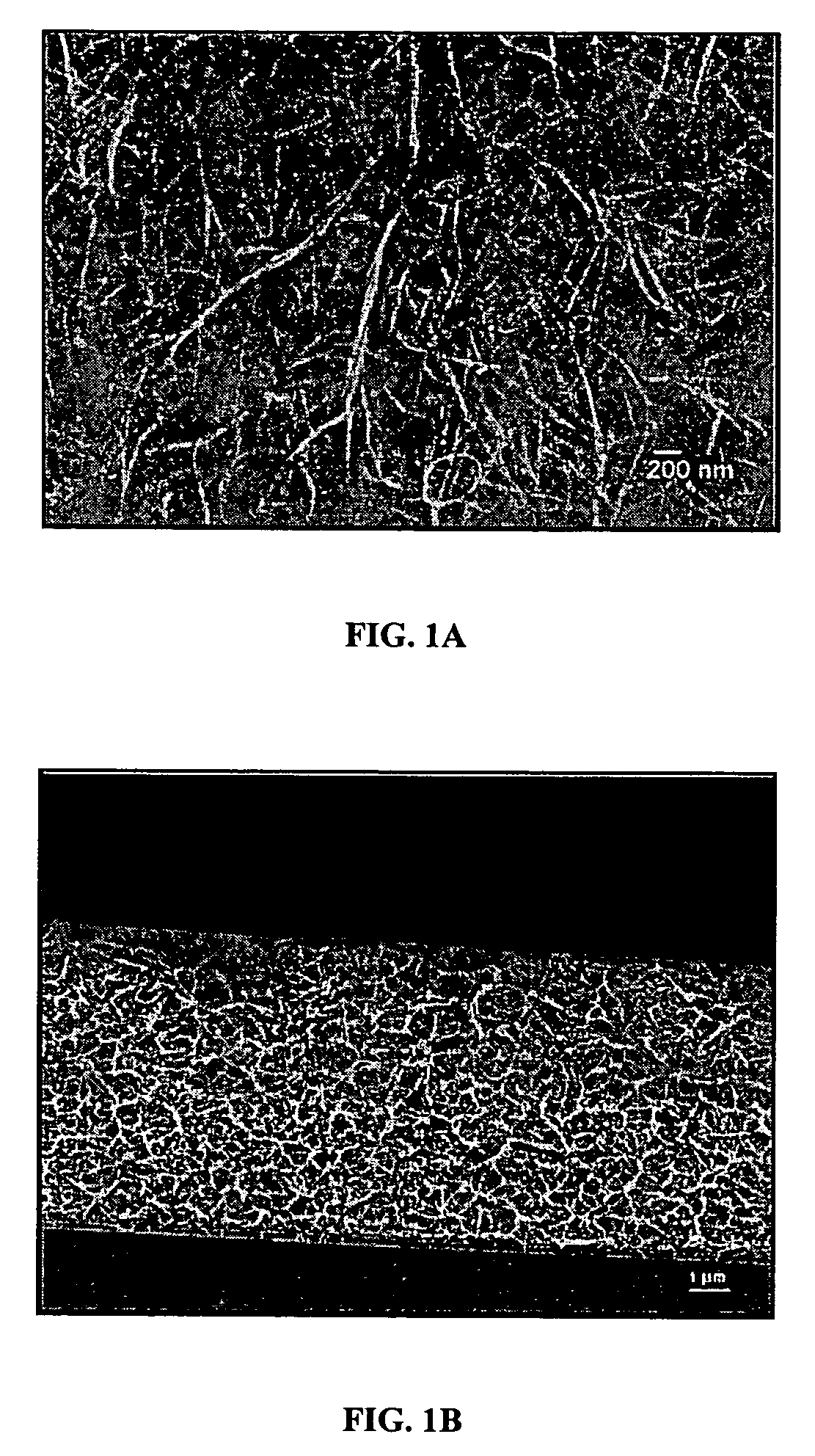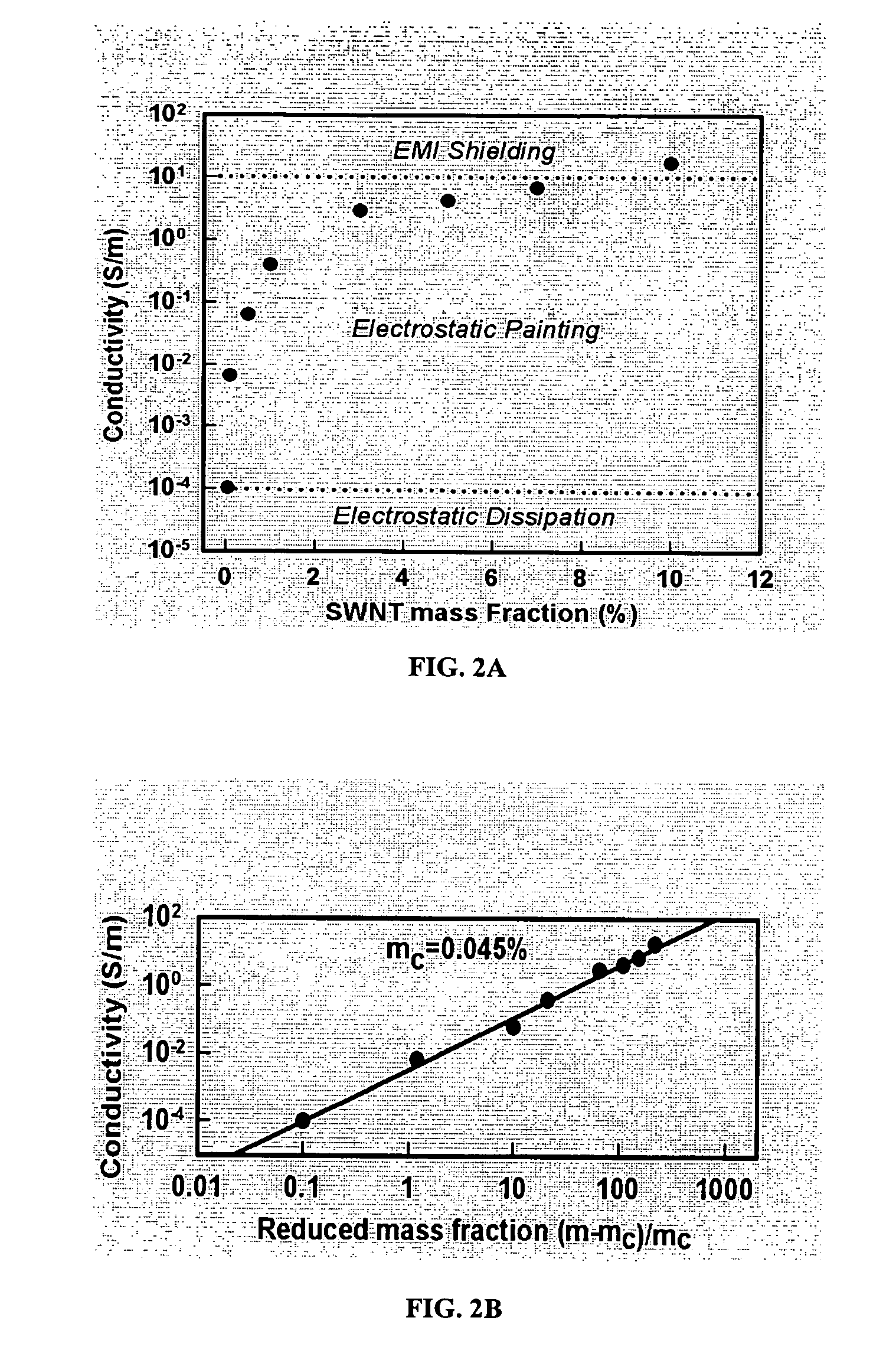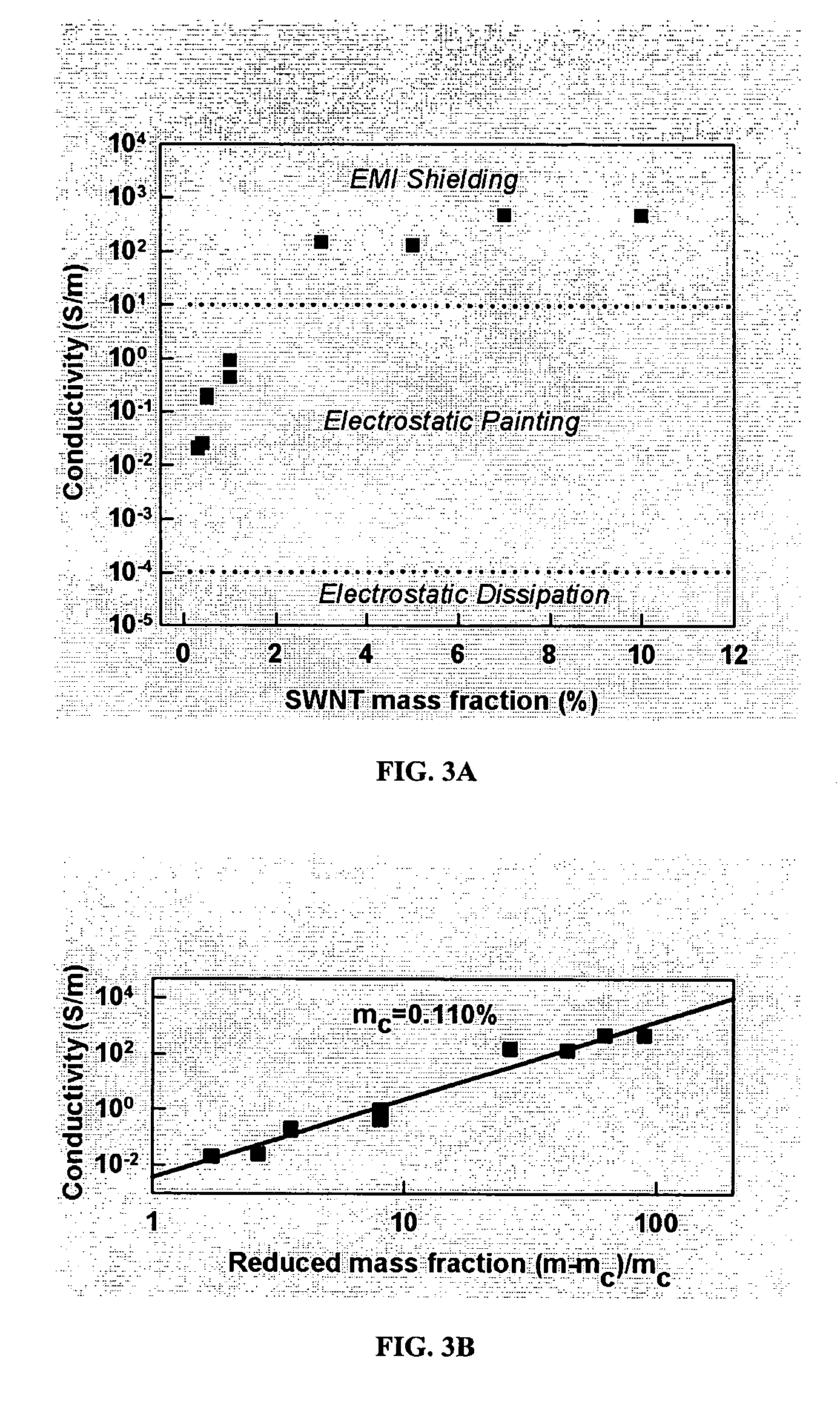Nanocomposites and methods thereto
a technology of nanocomposites and composite materials, applied in the direction of solid-state devices, tyre parts, vehicle components, etc., can solve the problems of difficult chemically functionalization without altering the physical mixing, and inability to achieve the desired intrinsic properties of nanotubes, so as to improve thermal conductivity, increase electrical conductivity, and reduce electrical percolation thresholds
- Summary
- Abstract
- Description
- Claims
- Application Information
AI Technical Summary
Benefits of technology
Problems solved by technology
Method used
Image
Examples
example 1
Electrical Conductivity of Nanocomposites of Polymer and Functionalized, Solubilized Nanomaterial
[0089]Noncovalently functionalized, soluble SWNTs / polymer nanocomposites of the present example show improvements in electrical conductivity over the polymer itself, with very low percolation thresholds (0.05-0.1 wt % of SWNT loading).
[0090]PPE-functionalized SWNT solutions were mixed with a host polymer (polycarbonate or polystyrene) solution in chloroform to give a homogeneous nanotube / polymer nanocomposite solution. A uniform nanocomposite film was prepared from this solution on a silicon wafer with a 100 nm thick thermal oxide layer either by drop casting or by slow-speed spin coating. The samples were then heated to 80° C. to 90° C. to remove residual solvent.
[0091]Nanotube polymer nanocomposite films with various amounts of solubilized and functionalized SWNT loadings from 0.01 wt % to 10 wt % in polystyrene as well as in polycarbonate were prepared. Thicknesses of the films were m...
example 2
Thermal Conductivity of Nanocomposites of Polymer and Functionalized, Solubilized Nanomaterial
[0098]Noncovalently functionalized, soluble SWNTs / polymer nanocomposites of the present example show improvements in thermal conductivity as compared to that of the polymer itself.
[0099]Thermal conductivity was measured on nanocomposites with various amounts of SWNT loadings from 0.5 wt % to 10 wt %. Films of the nanocomposites were prepared by solution casting on a PTFE substrate and the free standing films were peeled off from the substrate. A typical film thickness was about 50-100 microns. Out-of-plane thermal conductivity was measured using a commercial Hitachi Thermal Conductivity Measurement System (Hitachi, Ltd., 6, Kanda-Surugadai 4-chome, Chiyoda-ku, Tokyo 101-8010, Japan). At room temperature, f-s-SWNTs / polycarbonate nanocomposite film at 10 wt % of SWNTs loading results in ˜35% increase in out-of-plane thermal conductivity as compared to that of pure polycarbonate film.
example 3
Mechanical Properties of Nanocomposites of Polymer and Functionalized, Solubilized Nanomaterial
[0100]The present example provides improved mechanical properties of nanocomposites of f-s-SWNTs and polymer as compared with that of the polymer itself.
[0101]The term, PARMAX® (Mississippi Polymer Technologies, Inc., Bay Saint Louis, Miss.), refers to a class of thermoplastic rigid-rod polymers that are soluble in organic solvents and melt processable. PARMAX® is based on a substituted poly(1,4-phenylene) in which each phenylene ring has a substituted organic group R. The general structure of PARMAX® is shown at I.
[0102]
[0103]
[0104]
[0105]The monomer of PARMAX®-1000 is shown at II. and the monomer of PARMAX®-1200 is shown at III.
[0106]A PARMAX®-1200 solution in chloroform was mixed with a PPE-SWNT solution in chloroform. The solution was cast on a substrate, for example, glass, and let dry to form a film. The film was further dried under vacuum and at a temperature appropriate for the solv...
PUM
| Property | Measurement | Unit |
|---|---|---|
| width | aaaaa | aaaaa |
| conductivity | aaaaa | aaaaa |
| mass fraction | aaaaa | aaaaa |
Abstract
Description
Claims
Application Information
 Login to View More
Login to View More - R&D
- Intellectual Property
- Life Sciences
- Materials
- Tech Scout
- Unparalleled Data Quality
- Higher Quality Content
- 60% Fewer Hallucinations
Browse by: Latest US Patents, China's latest patents, Technical Efficacy Thesaurus, Application Domain, Technology Topic, Popular Technical Reports.
© 2025 PatSnap. All rights reserved.Legal|Privacy policy|Modern Slavery Act Transparency Statement|Sitemap|About US| Contact US: help@patsnap.com



